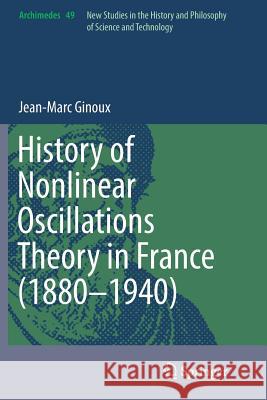History of Nonlinear Oscillations Theory in France (1880-1940) » książka
topmenu
History of Nonlinear Oscillations Theory in France (1880-1940)
ISBN-13: 9783319856049 / Angielski / Miękka / 2018 / 381 str.
Kategorie:
Kategorie BISAC:
Wydawca:
Springer
Seria wydawnicza:
Język:
Angielski
ISBN-13:
9783319856049
Rok wydania:
2018
Wydanie:
Softcover Repri
Ilość stron:
381
Waga:
0.59 kg
Wymiary:
23.37 x 15.75 x 1.78
Oprawa:
Miękka
Wolumenów:
01
Dodatkowe informacje:
Wydanie ilustrowane











